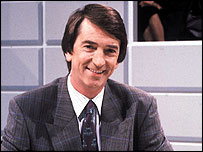The Magic Roundabout
 THE MAGIC ROUNDABOUT
THE MAGIC ROUNDABOUT Made by: BBC
Shown on: BBC
Years shown: 1965-77
The Magic Roundabout begun life as Le Manege Enchante, a French animated series created in 1965 by Serge Donat. The BBC bought the rights to show it in the
He also renamed all the characters, including Dougal the sugarlump-loving dog, who the indignant French at first thought was named De Gaulle, and believed therefore that Thompson was making a judgement on their government. Others were less problematic: there was Florence, a little girl with a bad haircut, who seemed to be Dougal the dog’s girlfriend (see also Crystal Tipps & Alastair); Brian the snail; Ermintrude the cow, who could spin her head around 360 degrees, and was allegedly based on Thompson’s wife, Phyllidia Law - although maybe not because of the neck skills; Mr Rusty, who owned the roundabout; Dylan the guitar-strumming rabbit, named after Bob Dylan, who would be horizontal if he was any more laid back; and, of course, Zebedee, who, with his spring base, looked as though he’d escaped from being a jack-in-the-box. The irate Mr MacHenry was supposedly in charge of the whole thing. The stories were simple, and often involved the easily-confused Dougal having something basic explained to him by one of the others, usually
Of course, everyone remembers The Magic Roundabout because of the popular theories that each character stood for one of the major drugs - Dylan’s relaxed state, for example, was put down to some non-PC reefer smoking. Eric Thompson is no longer with us, but his wife, Phyllidia Law remains adamant that his intentions were entirely pure and wholesome, and that The Magic Roundabout characters have earned their dodgy reputations unfairly. But then, Zebedee did always say, “Time for bed!” at the end of the episode, which was a little questionable, seeing as it was only late afternoon.
SQUARE EYES RATING: 6/10


